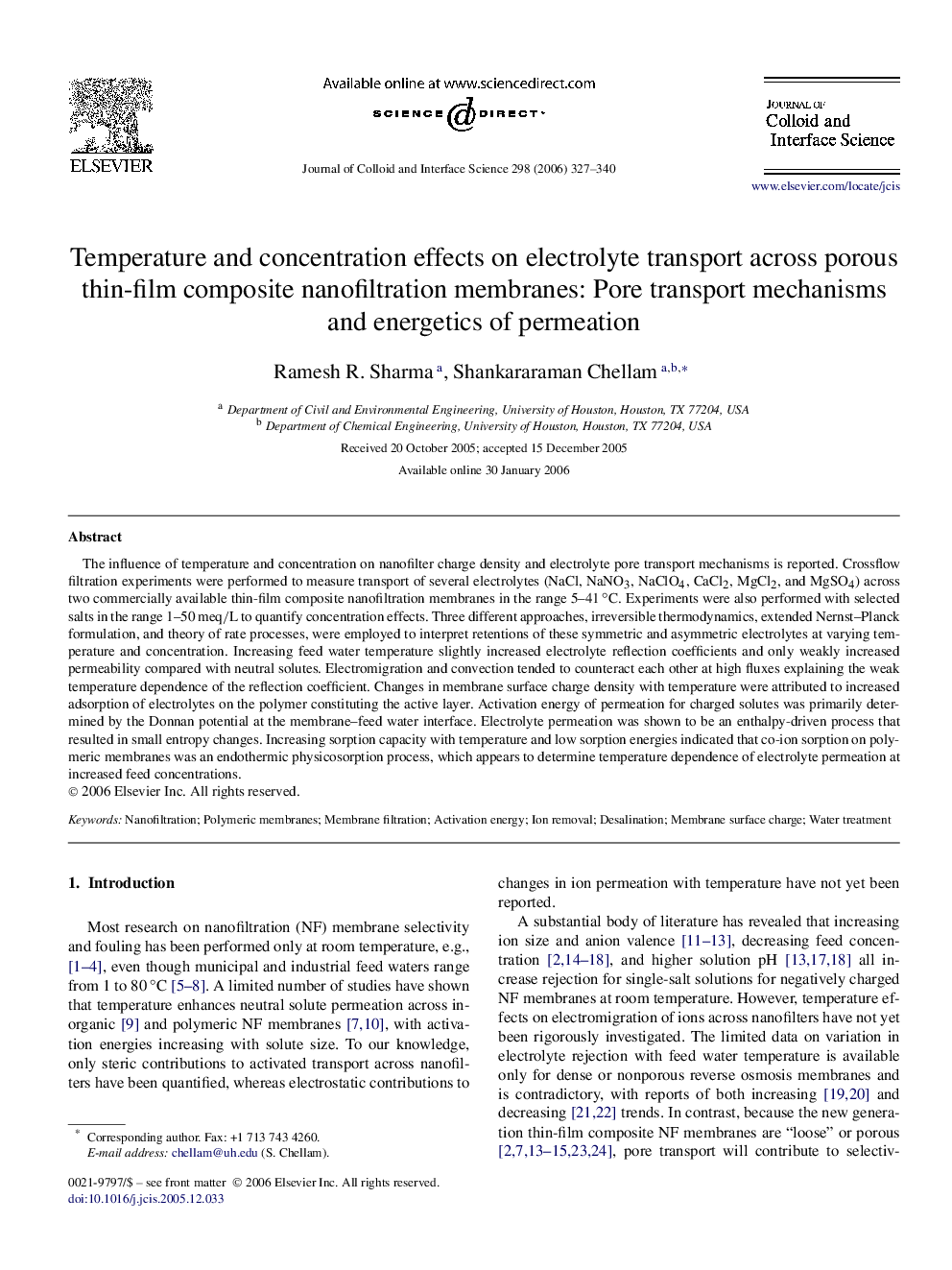| کد مقاله | کد نشریه | سال انتشار | مقاله انگلیسی | نسخه تمام متن |
|---|---|---|---|---|
| 613639 | 880725 | 2006 | 14 صفحه PDF | دانلود رایگان |

The influence of temperature and concentration on nanofilter charge density and electrolyte pore transport mechanisms is reported. Crossflow filtration experiments were performed to measure transport of several electrolytes (NaCl, NaNO3, NaClO4, CaCl2, MgCl2, and MgSO4) across two commercially available thin-film composite nanofiltration membranes in the range 5–41 °C. Experiments were also performed with selected salts in the range 1–50 meq/L to quantify concentration effects. Three different approaches, irreversible thermodynamics, extended Nernst–Planck formulation, and theory of rate processes, were employed to interpret retentions of these symmetric and asymmetric electrolytes at varying temperature and concentration. Increasing feed water temperature slightly increased electrolyte reflection coefficients and only weakly increased permeability compared with neutral solutes. Electromigration and convection tended to counteract each other at high fluxes explaining the weak temperature dependence of the reflection coefficient. Changes in membrane surface charge density with temperature were attributed to increased adsorption of electrolytes on the polymer constituting the active layer. Activation energy of permeation for charged solutes was primarily determined by the Donnan potential at the membrane–feed water interface. Electrolyte permeation was shown to be an enthalpy-driven process that resulted in small entropy changes. Increasing sorption capacity with temperature and low sorption energies indicated that co-ion sorption on polymeric membranes was an endothermic physicosorption process, which appears to determine temperature dependence of electrolyte permeation at increased feed concentrations.
Mechanistic interpretations of changes in electrolyte selectivity of polymeric thin-film composite membranes with varying feed water temperature and concentration are provided.Figure optionsDownload high-quality image (129 K)Download as PowerPoint slide
Journal: Journal of Colloid and Interface Science - Volume 298, Issue 1, 1 June 2006, Pages 327–340